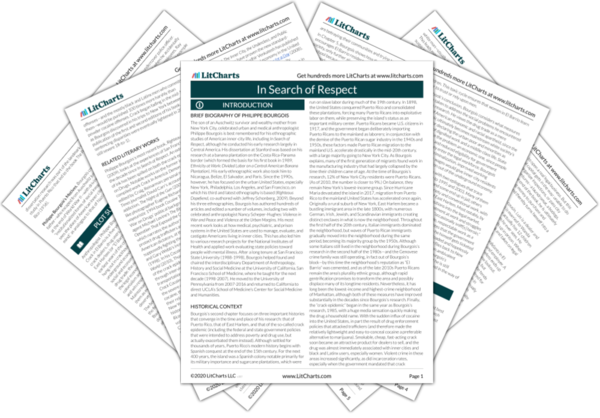Although he is pessimistic about the United States’ likelihood of serving its urban underclass, Bourgois does at least have the power to insist on giving his subjects the dignity they are denied in the mainstream. This means taking their struggles seriously, but also refusing to let those struggles excuse their violence and poor decision-making. Bourgois reminds the reader one more time that, despite the many negative media and popular culture representations of the American urban poor—who are treated as a foreign element or scourge on the population—his friends in El Barrio are eminently American, perhaps to a fault. The people of El Barrio do not lack in motivation or entrepreneurial ability, merely accessible resources for bettering themselves.
